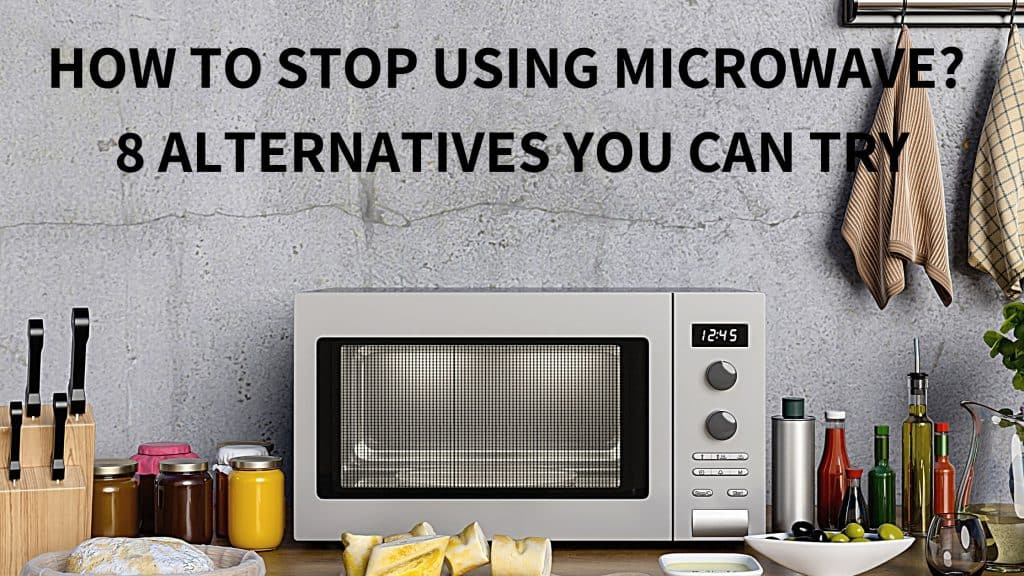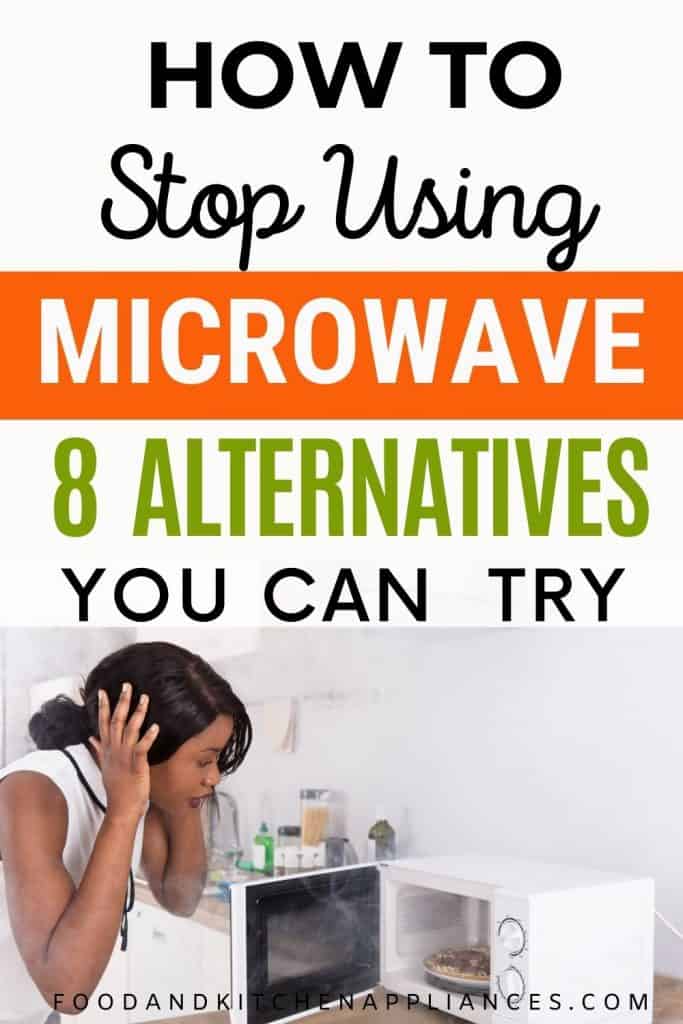Microwave ovens are a common sight in kitchens all over the world. They make the process of heating food quick, easy and convenient. However, microwaving food can have some unseen dangers. These dangers should be enough to make you want to stop using your microwave oven altogether.

Microwaves use high waves of energy to heat food quickly. This energy heats the molecules in the food, making them move faster and faster until they break down and turn into gas. This process is called “excitation.” The molecules in microwaved food release chemicals such as free radicals, which can destroy cells in your body and lead to cancer or other diseases such as Alzheimer’s or ALS (amyotrophic lateral sclerosis
Here are eight tips: how to stop using microwave:
1. Use saucepan to heat leftover
If you want to heat your leftovers like rice, curries, or even soup, you can quickly reheat them in a saucepan. There is no need to heat it in the microwave.
2. Boil water in a teapot
Instead of heating your water in the microwave to make tea or coffee, use your teapot to heat or boil water. I always make my tea in a saucepan and never use the microwave to make my tea.
It is not that hard; you need to put these things into practice.
3. Steam or roast your veggies
Steamed or roasted veggies taste good and are healthy. The ideal option is to eat raw food products. Still, we need to cook most of the food items. It is best to choose the cooking style that keeps the nutrients intact.
Steaming helps in retaining the nutrients, and even toasting helps in making food tasty
4. Use a toaster oven
You can use a toaster oven for reheating when you have leftover food that you want to eat without any additional cooking. For example, pizza and burgers can be reheated in the toaster oven.
To reheat the food in a toaster oven, you should preheat it for about 5-10 minutes, depending on the size of the appliance. Then, reheat the different food items together but remove them as you feel heated.
Like baby food should be removed after 2-3 minutes. Rice and curries take around 5-8 minutes( depending on the equipment).
Pizza or pasta may take a few more minutes to reheat. These are significant steps to reduce microwave usage in your household.
5. Plan ahead
Plan your food items, so you don’t have to use the microwave to thaw food items. Instead, remove the frozen food items from freeze and put them in the refrigerator. Before cooking, use water to soften the food.
6. Melt butter, chocolate on the stove or in hot water
When you need to melt chocolate, there’s no better way than using an instant double boiler. It is so easy! Simmer water in the saucepan with your creamy treat on top in a bowl. Melt the chocolate while stirring and remove it once you have the required consistency.
You can melt the butter in the same way.
7. Be Creative With Leftovers!
Leftover spaghetti? Leftover soup? Leftover rice? You can make something unique out of all sorts of leftovers. The best thing about it is that you don’t have to follow a recipe!
I always have leftover rice. So I saute some vegetables the next day and mix them with rice to make a veggie pulao.
Creativity with leftover food is often overlooked. But this doesn’t mean that it’s any less helpful or creative. On the contrary, many people find creative dishes the most satisfying because they know that they didn’t just eat the same thing they’ve eaten before.
8. Use a hot water container to reheat the food
We cannot heat some food items on direct heat. Use hot water in a container to reheat these types of foods. This method works well for liquid food items and baby food. To reheat the food:
- Take some water in a saucepan
- Heat it on a gas stove.
- Place the container containing food items in the saucepan.
- Hot water in the saucepan will heat the food product.
Can you live without a microwave?
Microwaves are an invention of the 20th century, and it is shocking how they have become so popular in the 21st century. I am very skeptical about microwaves; their only advantage is quick. Microwaves may be convenient, but that doesn’t mean they’re safe. Microwaves emit radiation, which has negative health implications.
There are many drawbacks to cooking with a microwave. One of the most important ones is that microwaves don’t cook food; instead, they heat food molecules to high temperatures so that they vibrate so quickly that our sense of taste can no longer identify them as food. This means microwaved food still tastes like its raw form and not like it’s cooked! The only upside to using a microwave is saved time because it cooks
My thought is that people were living without the microwave before its invention. I started using the microwave just ten years ago. Before that, microwaves had no meaning for me.
Still, the only use for me is to heat the food if it has got cold. I never cook anything in the microwave. Now I have decided not to use the microwave to heat my food, and it is working fine for me. I am taking baby steps towards a microwave-free life.
